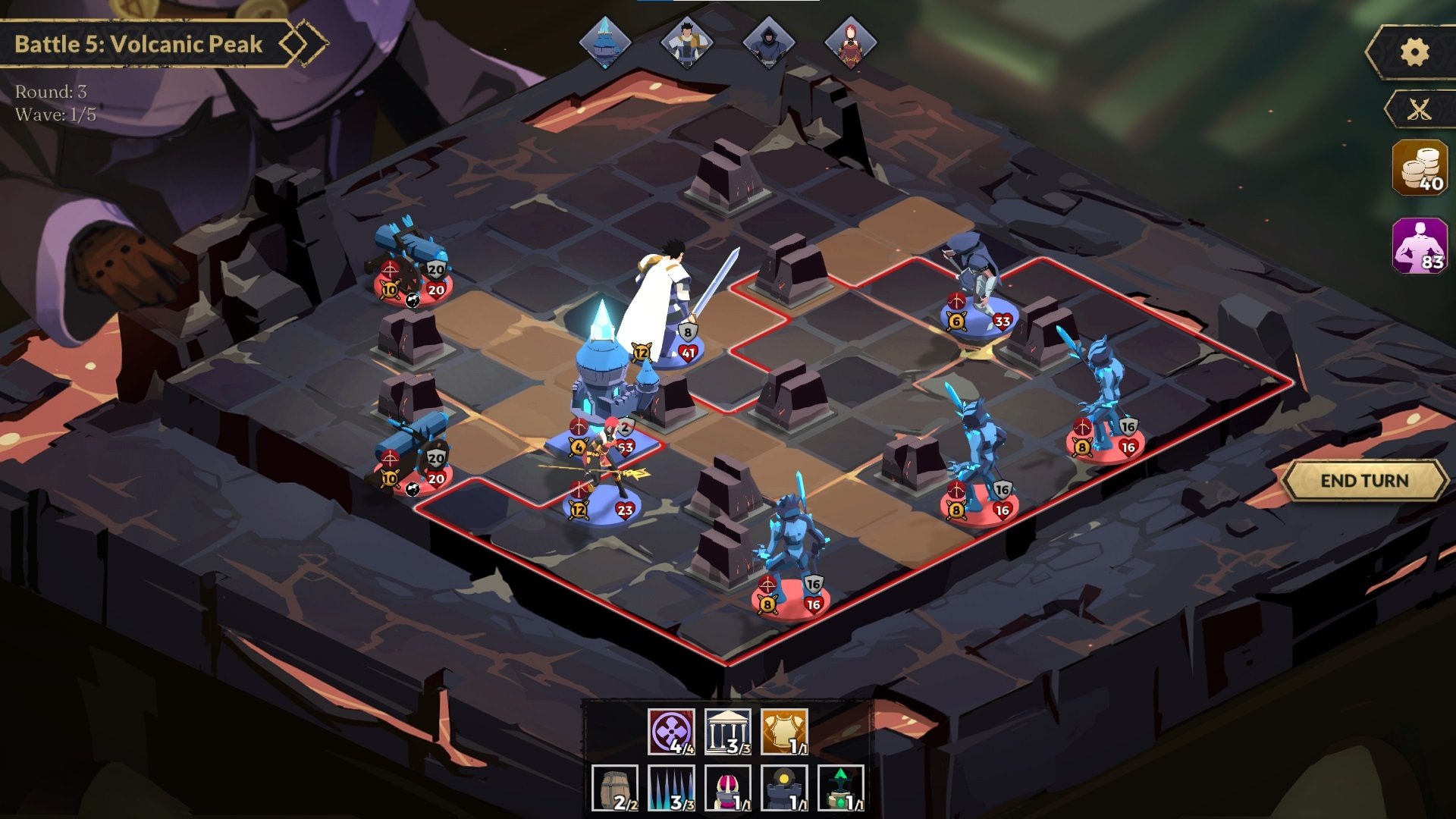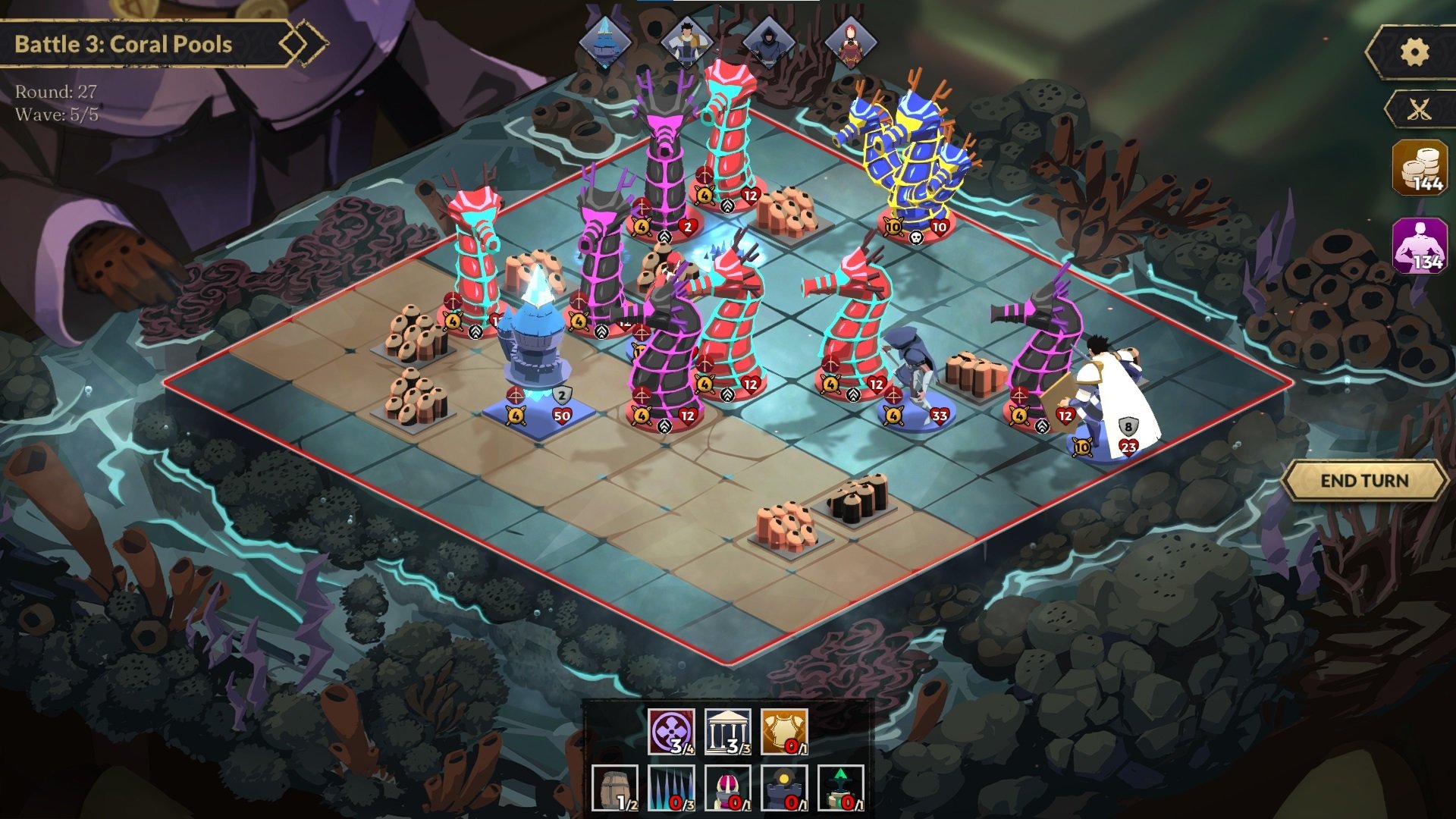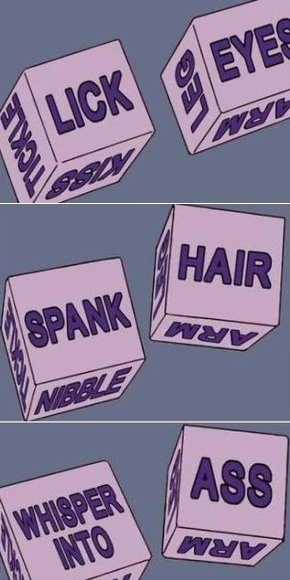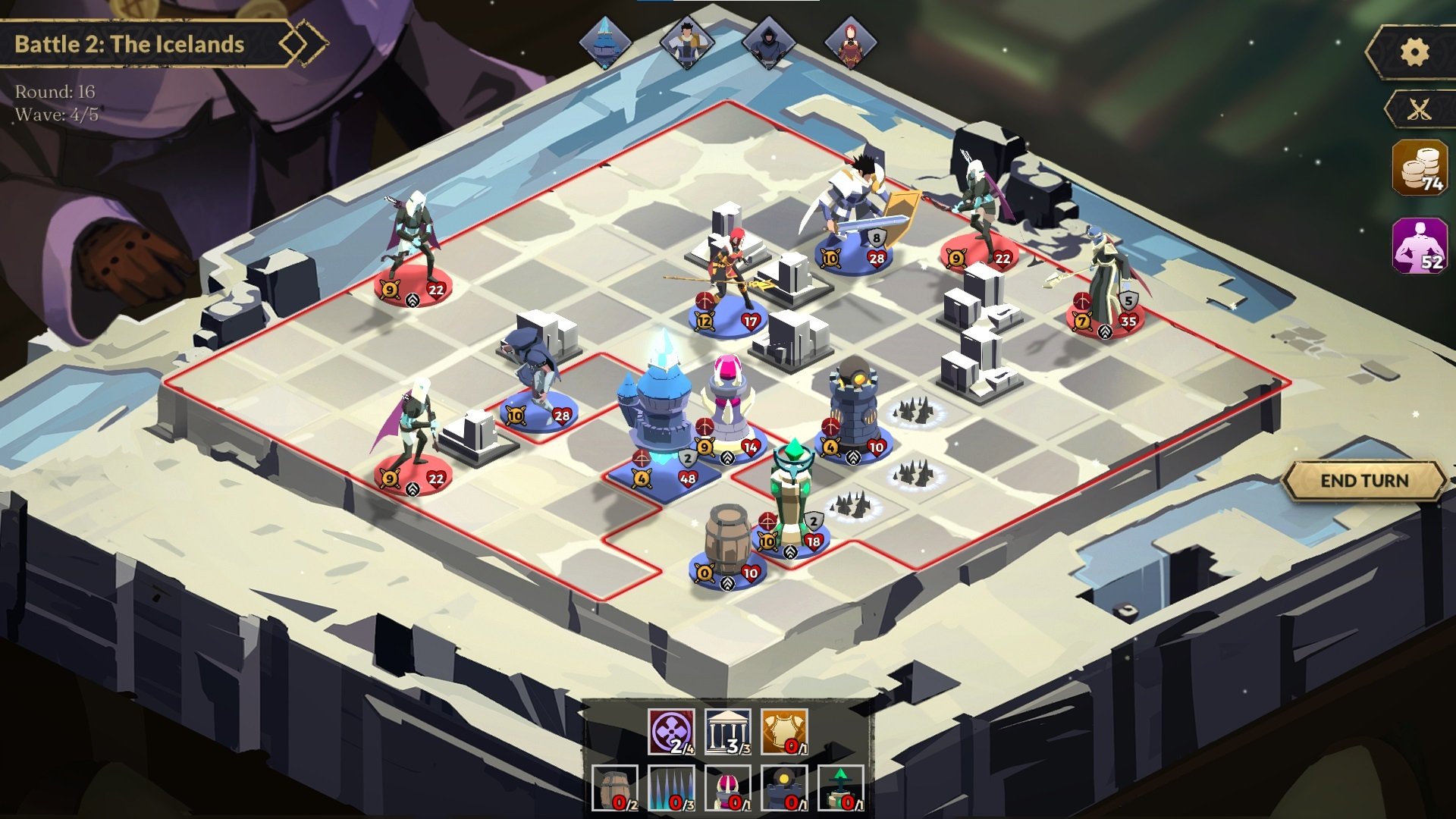Review | Defend The Rook - A Strong Gambit
And you may find yourself on a nine by nine square board
And you may find yourself surrounded by goblins, coral hydra and sentient fungi
And you may find yourself behind the wheel of an army of heroes
And you may find yourself in a fantasy setting, with a beautiful queen
And you may ask yourself, “Well, how did I get here?”
That was a Talking Heads reference in case it wasn’t painfully obvious…. Anyway!
After its initial release to Steam in October of 2021, I had the opportunity to take a look at developer One Up Plus’ latest tactical tower title (say that five times fast) and its move to Nintendo Switch. Defend the Rook takes the best of a smart roguelike system with turn-based Tactical RPG combat and melds that tightly with tower defence
Don’t just stand there, c’mon do something! …What do you mean it’s not my turn?
A wonderful thing I noticed upon booting up Defend the Rook (DTR) is that the tutorial isn’t a requirement to jump into your first run! It’s quite refreshing when a dev team can trust their players to get to grips with a system as they play, and a testament to how easy it is to learn the game’s inner workings as you go
While I did opt to do the tutorial, it was thankfully quick, painless and showed me just enough to get going. A veritable pat on the butt and a “Go get ‘em, champ.” The premise is that you’re a magister, large-of-hat and the commander of units such as Heroes, Contraptions and Traps along with an array of spells at your disposal. You’re aiding a golden queen in her search for and defence of precious gems, all while protecting your lynchpin — the Rook. Your ‘King’ in chess terms, is just WAY more capable. I would go into further detail on the story, but it would immediately spoil the inherent roguelike nature of the short tale that the game tells.
My upgrade paths for the Heroes usually focus on accommodating for my constant panic and prayer that I haven’t mucked it up immediately.
DTR will have you progressing through five battles in each run. You fight your way through waves upon waves of enemies using only your wits, clever unit placement and movement ending each battle with a boss fight. Your beginning Hero loadout consists of three run-of-the-mill fantasy archetypes, the Warrior, Sorceress and a Rogue. You’re free to command and move these units about the battle board during play, and each can be improved in a multitude of different ways before each new battle via a skill tree you will level up during runs. You’re also equipped with Contraptions, the unmoving tower part of our tower defence elements. These come in many forms and capabilities such as long-range cannons, arcane bolt-shooters and some good ol’ mortars. It is a simple loop of gameplay where “explosions make brain go brrr”, but that doesn’t make it any less satisfying. We also have Traps; from proximity mines to freezing spikes and cling traps, the very last of those being straight up bear traps. All of which thanks to nice sound design and cool animations are pretty sick. Lastly, we have spells, you pick one of three randomly generated sets to bring in with you. Think of them as consumables that heal, provide buffs or deal damage. Handy in a pinch.
Once you complete a run, or you’re defeated during one, any gems you’ve attained by defeating bosses along the way can be used to permanently upgrade your arsenal by way of purchasing new unit types, mid-battle boons/situational stat-ups or new spell options. Everything else will reset, such as unit-builds and experience. Par for the course in a rogue-lite, really. I never found myself too attached to the way I had built any one unit by the end of my few successful runs meaning a reset of them felt less like being pulled back to zero and more like an opportunity to sink my teeth into each new tasty unlockable.
Darling, it is clearly NOT better down where it’s wetter.
My personal favourite combo that I discovered involves the Rogue switching to a Corsair, a pirate class with more range and utility rather than pure melee damage. Placing them on the board — along with a Rook-type that can double-cast a certain Duplicate tower spell — all paired with the arguably overpowered Vantage Point ability (when a Corsair stands beside a Mortar tower, they get +3 range) turns them into a pirate sniper. Having two Vantage Points stacked and the MANY duped mortar towers basically meant none of my enemies were safe. These sort of overpowered builds are the highlights of roguelikes like Supergiant Games’ Hades, and being able to migrate this feeling to a tactics game is extremely satisfying. Within a few runs, you will be bullying the enemy forces from your ivory mortar towers and loving it.
Going beyond fun builds and strategies, DTR provides an appropriate challenge that utilises the reasonably-sized board well, often densely packing enemies into the arena with each new wave. This adds a sense of urgency to each new problematic pack of enemies, which I feel lends itself to the inherent protective strategies required to carry your minions through each battle. I’ve been playing Final Fantasy Tactics lately on the side and realised how stark the contrast it was from that game's aggressive and proactive playstyle to DTR’s own defensive and reactive one. I found myself using well-ranged tower placements to ward a whole corner (or an entire side) of the square field available. I never really veered off from that strategy, as the higher my run count got, the higher the enemy counts got too it seemed as I progressed through the Ascension system.
To quickly explain: Ascension works similarly to the Pacts of Punishment difficulty modifiers in Hades’ endgame. Except here, this system is part of Defend the Rook’s general progression and required to unlock some classes, alongside perma-upgrades.
Ok, I’ll role them one more time.
The Chosen One? Dead Dragon?
This led to my only major gripe with DTR’s moment to moment gameplay. Difficulty while Ascending seemed to just apply a higher enemy count or healthpools, which almost forced me into my fortress tactic explained above. The addition of waves spawning after a set amount of turns transpiring made each battle more into a race for damage output, and I don’t know quite if I like that. I appreciate that there needs to be some form of escalation as you play, but can’t help but think that maybe different board shapes or some form of added tile modifiers (perhaps Fire Emblem-esque buffs/debuffs from certain terrains) would turn up the heat, without just relying on number getting bigger and bigger.
In terms of technical and visual presentation, I found both a little bit lacking. The setting gave me thoughts of darts being thrown at a generic fantasy board (or maybe those erotic bedroom dice from that one Simpsons episode).
A lot of the visual presentation just felt like a box that needed to be swiftly ticked and what I assume was not the main focus for One Up Plus when creating a tactics focused game. To be honest, the almost Fort Condor-like faceless, chunky and nearly polygonal models of the units are quite charming at times. However, I’m less keen on the world design. On one hand, I can appreciate the game being laser-focused on solid gameplay above all else, however, I wish they had just gone a little weird or out-there with design to help DTR stand out from the litany of fantasy trope-ridden titles across the indie scene.
Aside from the odd UI hiccup, the game’s translation to console on Switch works absolutely fine, even taking advantage of the seldom-used touchscreen. I found myself playing undocked mostly, as the format of the game works great for that ‘pick up and play’ vibe and it helps the game loads up quickly. A font resizer accessibility option would’ve been appreciated here, as you can often find yourself squinting while playing on the smaller screen.
As with much of the presentation, the music also feels like an afterthought, with only a short loop of the main menu ambience to accompany you while you prepare for your next run. You’ll hear the same battle track quite a bit, along with generic fantasy horn, string and drum percussion instrumentation. The soundtrack seemed near absent otherwise.
“Ice to meet you.”
…
Sorry.
On the whole, Defend the Rook is a great game to play — emphasis on game. You can tell a lot of thought went into how it works and the systemic mechanics that play off of each other, it truly affirms the talent of a team that knows how to get that blood pumping and the brain ticking over. It’s a small shame about the lacklustre presentation, but I would take solid gameplay that keeps me coming back for more over style with no substance. If you’re a fan of the tactics genre, I wholeheartedly recommend Defend the Rook to help you scratch that everlasting, ever repeating itch.
Maybe just bump some of your own tunes while defending yourself from the hordes.











